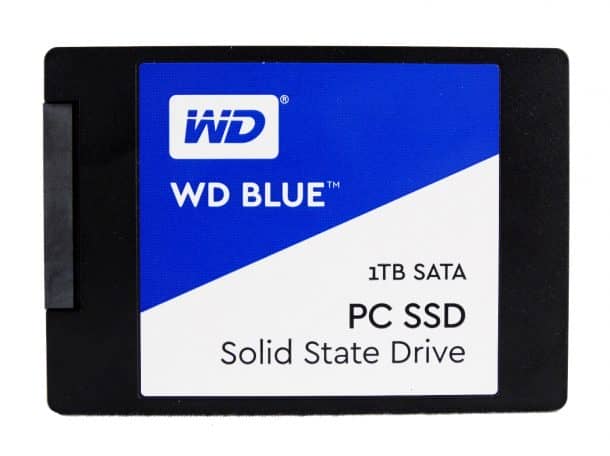Lo and behold, WD’s latest new Blue series consumer SSD which claims to be using SanDisk acquired technology.
Western Digital has been trying to make a dent in the SSD market since 2010 when it first launched Silicon Edge Blue. That venture crashed and burned as the $999 (256GB) SE Blue got the case of JMicron. After that Western Digital acquired SiliconSystems Inc. to help them in the field, but it still did not make much happen.
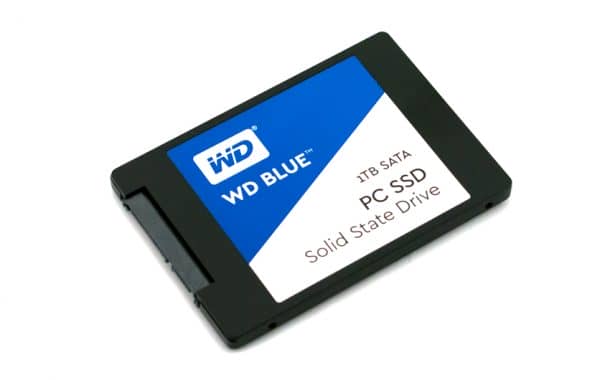
Up till now, the “1% products” by the Western Digital Raptor series have not been their big sellers, but they now aim to turn that around with their latest Blue Series SSD, which come in three models ranging from 1TB to 250GB.
The review:
Getting down to the business, we are going to review the SSD to make it an easier for you to decide.
The Blue SSD has shown a slightly higher performance and endurance when compared to its competitor X400. This SSD gives a nice transfer rate of 545 MB/s in sequential read and 525 MB/s when attempting sequential write speed.
It’s random performance has tipped the scales at 100,000/80,000 read/write IOPS. Out of the three options, the two higher capacity models are better in performance, but the 250GB version is not that far behind either.
WD’s SSDs are solely based on the drive on the Marvell 88SS1074 “Dean” 4-channel controller, which is known to support low-density parity check (LDPC) error correction code.
The addition of LDPC means the SanDisk boasts 15nm 3-bit per cell (TLC) NAND enabling a two-tier error correction approaches both hard and soft. LDPC has more longevity than BCH ECC and planar NAND.

Warranty And Endurance
All three versions of the SSD come with a 3-year warranty that is limited by (TBW) terabytes written endurance rating, which are the number of terabytes written before the warranty expires. Its 1TB Blue comes with a 400TBW rating while the Blue 500GB comes with 200TBW. The 250GB version also entails a 100TBW guarantee.
Comparison Products
We will compare the WD Blue SSD with the following products, Samsung 850 EV0 (1 TB), Corsair Force LE (960 GB), Crucial MX300(1050 GB), Mushkin Reactor (1 TB) and Toshiba OCZ TR150 (960GB).
Sequential Read Performance
Although all of the drives did very well, the new Blue’s performance was top notch, as it achieved 524 MB/s at QD2. Only Corsair Force and Toshiba did slightly better than Blue’s SSD.
Sequential Write Performance
With the exception of the Adata SP550, almost all of the drives in this review use direct-to-die write algorithm. When the SLC buffer is open, the 128KB write performance measured 450MB/s. As the buffer size is dynamic, about 80 GB of SLC space was measured on an empty Blue 1TB. But as the drive filled up, the buffer space shrank. The TLC sequential write performance marked around 300MB/s.
Random Read Performance
The Blue SSD was seen to unexpectedly deliver over 10,000 random reads IOPS at queue depth 1, which takes into a very elite group. Even the SanDisk X400 and some entry-level NVMe SSDs couldn’t reach this mark, and only the Samsung 850 EVO was seen to touch the 10,000 high point.
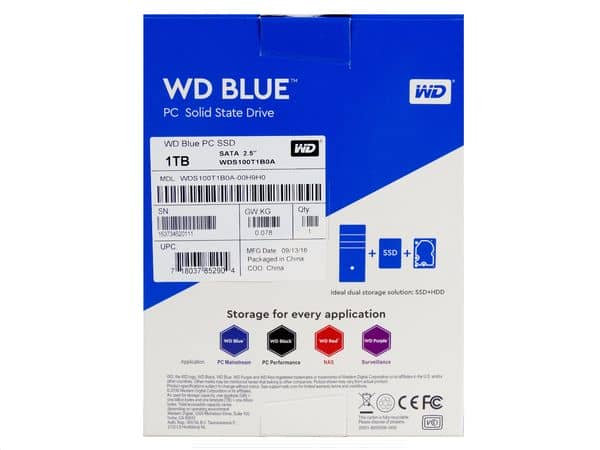
Random Write Performance
The random write performance isn’t as exciting, but it still gets the job done. In comparison, the MX300 which uses the same Marvell 4-channel controller along with an additional 3D NAND gave better numbers when the queue depth was increased.
Total Service Time
The Western Digital Blue has shown better service times in the recovery stages, but the performance dips a bit after heavy usage.
Disk Busy Time
The 850 EVO was found to work less than the Blue in a lot of tests, meaning it would also perform better in the notebook battery life tests.
Notebook Battery Life
Usage of the Western Digital Blue on Notebook’s Battery life wasn’t too bad, though it could use some additional optimisation. 850 Evo gave 389 minutes; Force LE gave 376 minutes, and MX300 gave 371. Our WD Blue disk showed a performance of only 357 minutes
Availability And Pricing
The Western Digital Blue series is available on Amazon now. Below are the pricing details along with some specs.
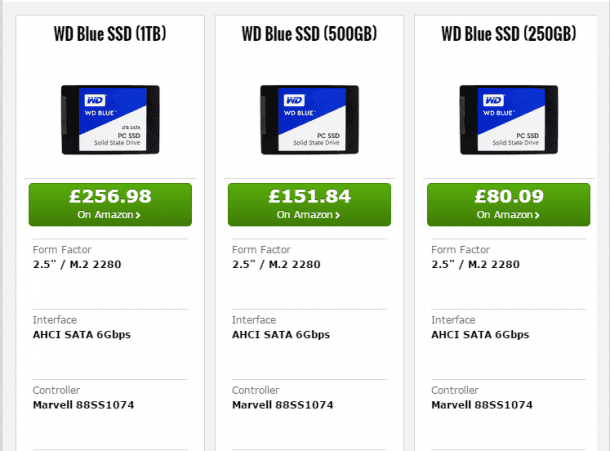
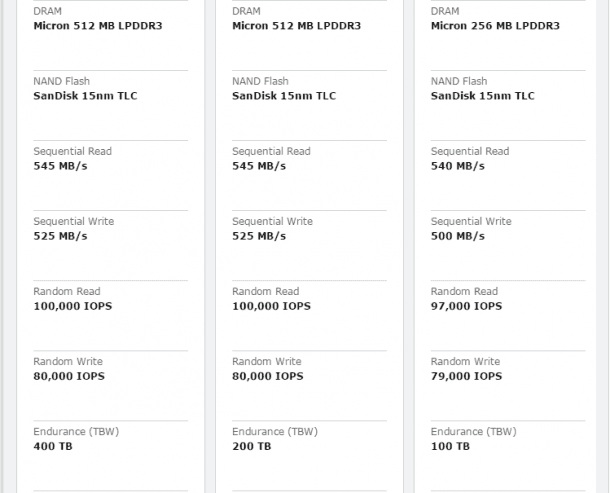

Conclusion
The SanDisk X400 1TB SSD is comparable to the Blue 1TB SSD in many ways and only differs in the updated firmware and programming, increasing its endurance. But despite having software-based firmware and programming, the Blue 1TB costs $299.99, which is significantly more than the X400 1TB’s $231.99 price tag. It also offers a 3-year warranty tag as compared to X400’s 5-year warranty, making it look a very weak option.
Having said that, the 10,000 random read IOPS barrier at queue depth one can’t be ignored, and only Blue and EVO stands lone warriors in this territory.
But the comparison of WD Blue SSD with the Samsung 850 EVO makes it look a really bad choice. As opposed to Blue, 850 EVO still comes with Rapid Mode, a DRAM cache scheme increasing its write performance and a V-NAND flash that can write data faster than any SATA bus. The Western Digital Blue has its performance dropped to 300 MB/s with its SLC buffer full, but no such problems are seen with the 850 EVO SSDs.
Here’s a condensed list of pros and cons of buying a Blue SSD
- Excellent mainstream performance
- Installation software included
- High price
- Outdated software toolbox

Pic Credits: Amazon
The Blue 1TB SSD is not a good bargain when seen from a price point of view. Although it does give an enhanced performance when compared with other mainstream SSDs, it still can’t beat Samsung’s 850 EVO. Pricing it at $299 makes it just one of those overpriced products which are neither appealing nor cheap enough to be considered. There is also a sale going on right now where you can get 25% for a limited time. So do not waste this opportunity if you are planning to get an SSD!


